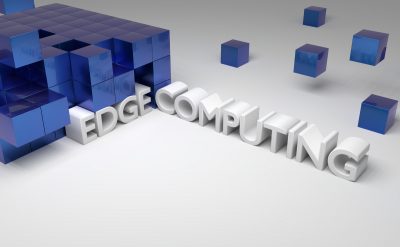Kubernetes objects are persistent entities that are present in the Kubernetes system. Kubernetes can be described in three entities that can specifically draw them together.
1. What containerized applications are running and on which nodes?
2. The policies that describe the behavior of the application- it includes different concepts such as restart policies, upgrades, and fault.
3. The availability of the resource for the application.
The Kubernetes object is the entity that describes the actual function of the object; the system will be constantly functioning towards describing the object. The creation of an object actually defines the Kubernetes system that would have allowed the Kubernetes system to understand the clusters workload that needs to be managed. In order to modify, create, and delete the objects the developers will require a Kubernetes API. Why exactly the needs of Kubernetes object seem to be proliferating over the cloud usage? Kubernetes helps us to manage the containers for the cloud technology. Currently, the Kubernetes rule the market of cloud and application development as they improve the probability of application function along with faster development of the application. Kubernetes assist the developers to work on different application feature without completely affecting the working of the application. Once the enterprises have adopted the containers in their development process, it’s also imperative for them to automate the setup and also the management of container that’s when Kubernetes can be used as an application.
Though many developers have developed other management solutions the Kubernetes has emerged as the best solution for cloud management. A survey was conducted for Cloud-Native Computing Foundation (CNCF) that stated around 69 percent of the enterprises are using Kubernetes to manage their containers. Kubernetes was developed by Googles that meant it’s determined authenticity and over thousands of consumers have been able to increase the robustness, security, and scalability of the cloud. Kuberentes have become a mainstream management solution for container management. All the cloud providers have also accepted the bandwagon, offering the customized Kubernete solution to manage the containers. Amazon executive during the recent event of re: Invent highlighted that Kubernetes of AWS is one of the fastest growing services in the AWS. The service is called AWS EKS and recently we even saw a launch of KubeCon. Kubernetes has seen growing popularity for the cloud solution providers easing the management requirement.
One of the largest tech deals till date when IBM acquired RedHat for about $34 billion, clearly states the importance of Kubernetes. Most experts believe that the value of the sale actually went up through the roof because of the growing popularity of OpenShift, Red hats commercial distribution of Kubernetes. The recent of acquisition of Heptio by the VMware, The enterprises also provided another of popular distribution of the Kubernetes. The price of the purchase is rumored to be close to $550 million for small enterprise. The recent mergers and acquisitions have just made the management solution more defined for the enterprises as Kubernetes offer a complete solution.
Current Misconceptions Regarding the Kubernetes
The popularity of the Kubernetes hasn’t stopped the increase in misunderstanding among the users regarding the Kubernetes. Currently, there are many misunderstanding regarding the Kubernetes one of them being the need of Do it yourself (DIY) for the open source software. Most of the developers around the world that use the Kubernetes as open source software believe that they need to fine-tune the solutions to match the requirements and needs. However, this will not seem like the best approach to deal with Kubernetes the reasons being managing all of the Kubernetes rather than the using User Interface layer. Maintaining a layer of User Interface over the Kubernetes will help improve the management and keep the security of them under check. Many developers that manually work on single Kubernetes to manage the security and develop the interface can improve their management rather than a manual work of progress. A load of managed Kubernetes service providers believes that setting in the abstraction layer will assist in getting the matter to begin, API server and resilience for the data stores.
Kubernetes also have a strong networking requirement and applicability but accessing each one individually means that you have to work on different kinds of YAML file. Having a tool that can help in describing the network layer for the implementation, we perform the same in StackRox platform making it more accessible. The powers of using Kubernetes assist the entries in a similar way on how to google Kubernetes engine makes the control plane of Kubernetes more accessible.
Security Capabilities
Kubernetes provide useful capabilities from the network management and assisting the secrets management. If proper policy improvement is done the enterprise can even control the use of Kubernetes to limit the number of resources that each asset can actually reach. Kubernetes is based on the container concept and each of them interacts with each other to aid different application development repeating the building blocks for the micro-services. By default, the Kubernetes are programmed letting all the service communicate with each other. The developers are working on the Kubernetes environment and the security team works to make them improve the security infrastructure. The purpose of digging in the security asset distribution is more towards reducing the actual impact of the attack if they occur. The actual movement of an asset will be restricted and the allowed communication between the assets can simulate the new network policies with the recommended configuration to improve the environment.
Conclusion:
Despite all the security arrangements, it’s imperative that we manage the Kubernetes under a microscopic lens of scrutiny. Enterprises are adopting the Kubernetes at a rapid pace, thus increasing the surface area for any type of attack and with the application of the UI layer, it will be able to simplify the management and security. A user interface (UI) layer acts as a management solution to actually integrate the management of different security and functionality.
To know more, you can download our whitepapers.









































































![[Things to Know] Before Selecting Cloud Solutions](https://d2qt3hjxf3fk7j.cloudfront.net/wp-content/uploads/2020/02/13083906/Cloud-Solution-400x247.jpg)